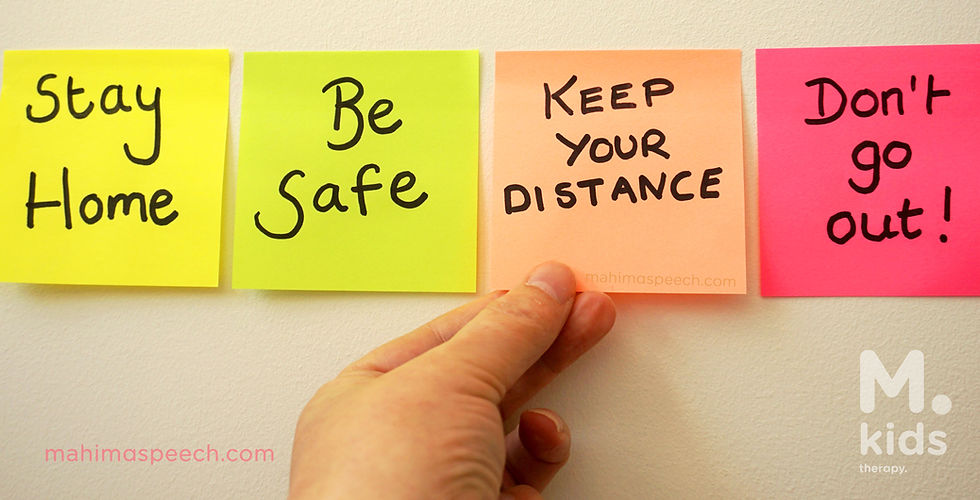Motto of the moment: Keep distance
- Mahima Thomas

- Apr 27, 2020
- 2 min read
Updated: Jun 8, 2020

Social distancing is the current norm. Difficult as it is for a generation that thrives on social gatherings and enjoyment, we adhere to it to survive a war against COVID-19, a war that has no boundaries and that does not discriminate on caste, creed, or color. It is a powerful pandemic and to survive it distancing is what we must do.
After a month and a half of lockdown adults and children has shown to have increased stress levels, anxiety, and behavioral issues. And this is typical. So, what about children with special needs? With their routines wrecked up and unable to maintain structure, behavioral problems and tantrums have been noted on the rise in children with special needs.
So, what could be the need of the hour?
Yes, Telehealth practices!!!! Physical distancing does not necessarily mean total social isolation.
With the evolution of technology everything is done at the click of a mouse, well figuratively.
Online therapy practices are on the bound. Setting a routine to meet the therapist, have fun, interact and get reinforced is a great way to beat off the tantrums and increase the child’s communication skills. As in a face to face session goals are set, worked upon and achieved on an online platform.
As parents we are quite skeptical. Will it work? Will progress be as efficient? Will the child therapist engagement suffer? Is it secure etc.?
Let’s take a quick look at the benefits of Teletherapy
1. Trans availability: Anywhere, any place with a good internet connection, online therapy is a convenience. Parents need no longer worry about depending on availability of top-notch therapist, time differences, native language therapist and the like.
2. Less travel time: Less travel, less tiredness and distraction on part of child and therapist, and so better results are observed.
3. Budget: Fewer expenditures translates into more savings for the therapist and the parents.
4. Independence: With the comfort of working from home during this lockdown period, parents and therapist can be flexible on the time availability and the best times the child can be best productive to make maximum use of the sessions.
5. Security and privacy: A legitimate concern indeed. But with the abounding technology the secure platforms are available to ensure privacy and client confidentiality.
A few guidelines while on the online platform?
1. Provide a distraction free environment to ensure success of the therapy
2. Provide relevant materials to keep the child engaged
3. Provide positive reinforcement and heavy doses of it.
4. Therapist should provide minimum background distractions and maintain steady camera eye contact.
5. Dressing – don’t overdo. Excess of accessories or facial expressions can prove to be distracters.
6. For younger children always advisable for parents to be on hand to steer through the sessions and provide physical contact and reinforcement.
7. Ensure clear communication with high quality camera and microphone.
8. Take short breaks if necessary
9. Therapists should communicate specific treatment goals and targets to the parents. Always sign off with a small task given in anticipation of the next session.
10. Always be positive and smile.




Comments